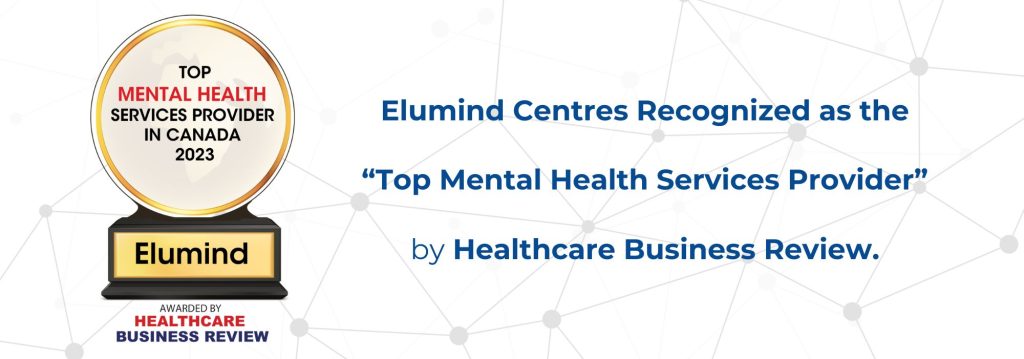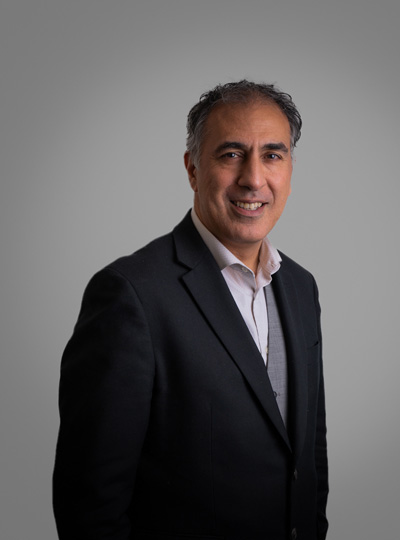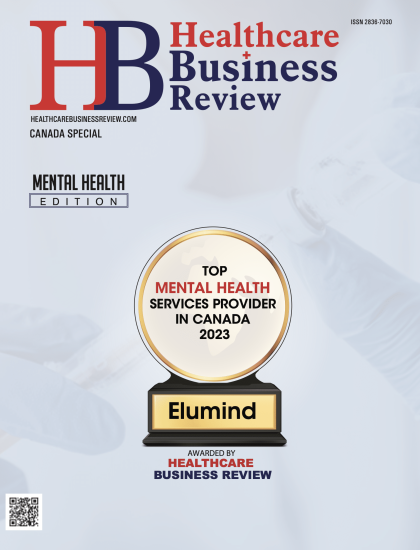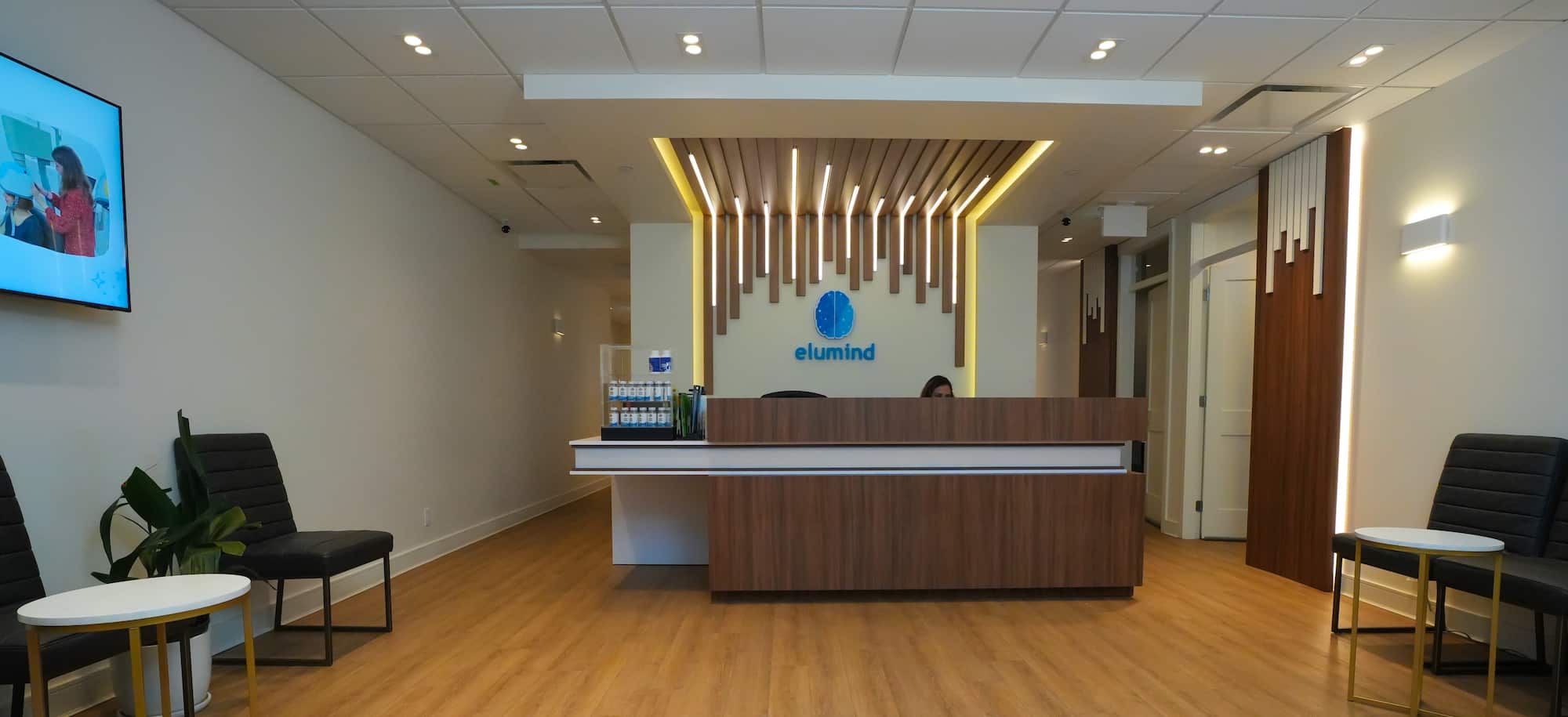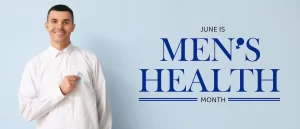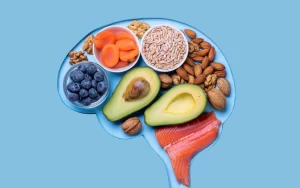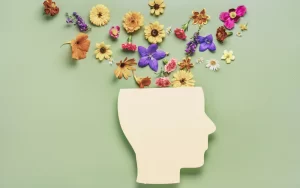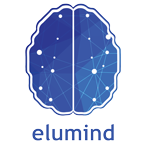In a remarkable achievement, Elumind Centres has been recognized as the top mental health services provider by the prestigious Healthcare Business Review. To shed light on the significance of this award and the vision that drives Elumind, Healthcare Business Review magazine had the privilege of interviewing Dr. Kourosh Edalati, medical director at Elumind Centres. In this exclusive interview, Dr. Edalati shares insights into the journey, the commitment to excellence, and the future of mental health care.
What is the angle that you want us to focus on when we write the articles for you? So, if you can give us an understanding of the angle that needs to come up, we can take it from there.
The most significant piece that I want to come away with from this interview is that mental and brain health requires an integrated approach. An approach that involves all aspects and not just one small area of focus. So, people can certainly be helped with one area of focus to a certain degree. But the difficulty with it is that the issues will continue to persist as time goes by. And, so, our approach to integrated mental and brain health is definitely what I would consider our leading edge. The main reason why we are very successful at what we do is that we have a model that we run everything through.
It’s called roads, cars, and drivers. And what do I specifically mean by roads, cars, and drivers? So, imagine you’re driving on a bumpy road; there’s construction, there’s traffic, it’s mountainous and windy, and it goes through bumps or side streets. It doesn’t matter what kind of car you have. Whether you have a Ferrari or a Toyota, if you have a challenging road, it will be the same thing. Also, imagine if you had an autoban, so one of those German super highways, everything like a perfect road. But on those roads, instead of, first of all, not having a car at all, you’d be walking.
That wouldn’t be very useful; make good use of your highway. Or let’s say you had a car, but it was like this old, beat-down diesel car. You had a MPE on your highway; that would not be the best use of your highway either. Imagine you have a supercar like a Ferrari, but the driving skills are not there. So, the driver basically hits the first pole in 200 kilometers, and it’s not going to be very useful either. So, this is our mood. Now, what do we do? This is an analogy obviously written in our mental health, and the brain has referred to the neural pathways. These are the pathways in the brain that we refer to as the corresponding network.
Everyone has these neural pathways. Some are not so good, some are amazing, and our job is to assess that first and then find out what we can do to turn them into autos or a superhighway. Cars are basically the chemicals in the brain. We call them neurotransmitters. And these neurotransmitters’ job is to be the agents of communication between these pathways. Some people have deficiencies in some of these neurotransmitters. So, they don’t have them; their brain doesn’t make enough of them. Some other people are able to make these neurotransmitters, but they’re not eating well or absorbing them well. So, somebody might take all these wonderful supplements and vitamins, but if the gut blindness is compromised, none of it is getting to, or at least not enough of it is getting to, the bloodstream from the bloodstream to the brain, and therefore, as an ingredient for the neurotransmitter.
On the other hand, if the person is not eating well and not taking any supplements, like on fast food diets, etc. the same concept basically applies. So, you have roads, cars, and finally, you have the driver, and the driver is the person’s psychology, their core habits, and how they use mental and brain health. And so, if you’re not a good driver, how often do people who have mental health issues end up eating poorly? Either they don’t have an appetite, or they don’t eat well; they eat junk food, etc. And so that’s going to also have an impact on everything else. So, this is what I mean when I talk about roads, cars, and drivers in terms of integrated brain and mental health. What we do at our center, at Elumind centers, is that first, we assess the roads, the cars, the drivers, the neural pathways, the neurotransmitters, as well as the gut health of an individual, and then also the psychology of that person. And then, we bring in all the tool sets that would address each area individually.
So, one set of tools would impact the pathways in the brain. One set of tools would impact the chemicals in the brain, and the other would obviously impact the psychology and habits of that individual. And so, the model that we have right now is not something that’s commonly practiced in the healthcare and mental healthcare systems. The model that’s practiced is basically one tool to fix everything.
So, people go to see a counselor, and they work on the driver’s piece. So, they get counseling, they go and see a life coach to work on the driver piece, either work on their emotions and their psychology, or they work on their time management skills, executive function skills in life coaching, or people go to the doctor and get a prescription for a medication, or they go to a nutritionist just to get the right supplements. And oftentimes, we forget that the gut is involved in all of this, like whether you take medications or nutrient nutrition with respect to supplements and vitamins. If your gut is not absorbing it, you should not waste your money on any of it.
Then, finally, we want to use some tools to basically work on the neural pathways, or roads, in this equation. And most places use either Neurofeedback, transcranial magnetic stimulation, or some other brain technology, but again, it is not enough.
That’s part of the puzzle. And this is why the model of medicine and mental health medicine has to change because it is right now very unidimensional. And with that unidimensionality, we are missing big parts of this journey of healing, as we want to call it.

What are the pain points prevailing, as well as how are you really trying to help your clients? It’d be great if you could shed some more light on the services that you offer.
The integrated approach is the main thing I would emphasize. We are not at the one pony show. We really focus on getting the individual assessed properly from all angles, including the roads, cars, and driver models. And then, based on that, figure out where we’re going. One of the top services that we offer is a QEEG brain map or quantitative EEG. And basically, that involves looking at these pathways in the brain through electrical activity or brain rate. And these electrical activities, or brain waves, are very individualized. So, this is more like a personalized medicine situation where we look at people’s brains very uniquely.
They have patterns, and these patterns of brain waves are electrical activity in the brain. Tell us, what this individual is struggling with in terms of mental health issues—whether there is a Depression going on, whether there’s anxiety going on, but it’s Autism, ADD, ADHD, or trauma PTSD. These are all some of the conditions that we can identify with our QEEG brain mapping. So, another short term for QEEG brain mapping is the QEEG, or sometimes people refer to it as brain mapping. It’s really a tool that has existed for many years. We are finally using it to look at mental health conditions. So, QEEG brain mapping doesn’t necessarily lead to a diagnosis, but what it does is infer and aid in a diagnosis where we also have an in-person or online assessment of the individual.
And then, when we combine the results, the ability to look at what the possible scenarios are where this individual is struggling is actually much better. The other tool that we use quite a bit is Neurofeedback, or Neurotherapy, sometimes referred to as EEG. Biofeedback is brain training, and it’s based on someone’s brain map. So, when we do a brain map, we identify the pathways that need work, and these pathways that need work usually have an imbalance or asymmetry of different brainwaves. Neurofeedback allows us to train the brain so that these brainwaves are balanced, or the amount of these brainwaves is actually established in such a way that the brain is optimized. So, Neurofeedback works on a principle called operant learning. And operant learning involves positive and negative reinforcement.
So, the individual is basically getting either rewarded or negatively reinforced when they hit any pathways in the brain that are not useful or optimized. So, think of it like, you’re driving on the road, and then, according to your instructor, you’re driving through a side road that has gravel in it, and then your instructor waxes you on the hand and says, no, don’t go through this road, and then go through a different alternate road. And then, when you go to that alternate road, the road is really good, and your instructor praises you for having taken this road. We are creatures of avoiding pain and going towards pleasure.
Every time we get rewarded, we go towards more of that. So, if you get praised, if you go more towards that, and every time you get punished, you stay away from it, just like you stay away from a hot iron. So, through repetition, Neurofeedback will help an individual achieve optimization of these pathways or reach a level of functioning that is no longer impairing just like it was before, a cause of Depression, Anxiety, Autism, ADHD, et cetera. So, Neurofeedback is a tool of therapy, and therapeutic assessments are tools of assessment. So, Neurofeedback is the first tool we have in terms of optimizing the roads. The other tool that we are uniquely using in Canada is called deep TMS, or transcranial magnetic stimulation.
Transcranial magnetic stimulation is basically this magnet that is placed on the areas where the problems are, such as Depression or OCD, and it provides the magnetic field, which in turn creates improved neurotransmitter or chemical conductance, as well as reducing inflammation and blood flow. So, we know that TMS is approved by Health Canada for a few indications. We know that with the deep TMS that we offer, as opposed to a regular figure of eight TMS, the reach to underlying structures is much better. And so, the results are actually more promising. TMS is used for, as I said, a number of conditions, including Depression, Anxiety, PTSD, and OCD; now there is Autism, and we use the brain map that I mentioned before, the QEEG brain map, to inform us of how we plan for that.
Another tool that we use is nutrition for mental health, and you can guess where I’m going with that one. That one typically involves the parts aspect of the equation. We are really dealing with the chemicals that we are putting in our bodies. First, you do an assessment of nutrition. We usually ask our clients or patients to keep a two-week food log. So, we understand their food patterns. And then, based on those food patterns, we can direct them to more healthy choices. But we also look at gut health in this situation. So, look at people’s guts and how they’re absorbing nutrients. Because if you’re not absorbing anything, you could eat as much nutritious food as you want; it has to go somewhere. Gut health is very important for us.
We measure that with specific diagnostic assessments, and we also sometimes look at neurotransmitters to find out how much of the chemicals people actually do have in their bodies and make course adjustments based on nutritional consultations. That would be very, very important. You cannot forget about medications. Medications are very, very important as well because there are so many of these doctors who might just be against medications. I think medications have their place, and they can be very helpful for people when they’re in complicated situations. Everything has its own time and place, and so medications are chemicals that are neurotransmitters, and they can directly influence the mind, emotions, cognition, and attention.
And so, at times, we have to make sure that the individual is not only using all these other services but also the right medications. It’s an integrated model. One of the other tools that we use at our center is called photobiomodulation, or PBM for short. And photobiomodulation basically works on the premise that the body’s energy is not enough, especially for mental and brain health. We know that there are certain parts of the cell that make energy; they’re called mitochondria. And we know that PBM, which is based on infrared or laser, can increase energy production in the cells, specifically in the cells in the brain. We call these cells neurons.
And by increasing energy production, it gives the cell much better tools in terms of reducing inflammation and dysfunction. And so, as a result of it, the brain is happier and more functional. And we’ve used that for a number of conditions, such as cognitive decline and Alzheimer’s. We’ve been using it for Depression and ADHD as well. We’ve seen some amazing results with it, and finally, one of the last tools I want to mention here is a very important part of brain therapy, a tool called bio-brain embodied therapy, I should say. In fact, it’s called biofeedback. So, Neurofeedback—I referred to it before also as EEG biofeedback—is about the brain, and biofeedback itself is what we use for the peripheral nervous system.
The peripheral nervous system implies that you have a central and a peripheral nervous system, is really your body. And it’s regulated through the sympathetic and parasympathetic nervous systems. Think of them as gas pedals and brakes in the body. So, one system, like when you see a tiger, your sympathetic nervous system is activated, and you get adrenaline; your blood flow is going to your muscles; your digestion shuts down; your heart is pumping like crazy; and your breathing is faster. And that is to get away from the tiger. So, it’s an appropriate activation of your sympathetic nervous system. Once the danger is gone, your parasympathetic nervous system calms everything down. Your heart rate is brought down; your breathing rate slows down, etc.
The problem is that when we have too much sympathetic nervous system and not enough parasympathetic nervous system, we have too much gas pedal and not enough breaks. So, it’s not a balanced system. And this is seen in individuals with heightened levels of anxiety or chronic pain. With biofeedback, we can balance that. So, one of the things we do is look at heart rates, breathing, and the amount of salt in the sweat of an individual. And these are indirect or direct measures of the activity of the gas pedal system or sympathetic nervous system. And so, we can regulate that by training the individual to have more regulated breathing and a more regulated heart rate. And also, the sweating becomes more regulated once the sympathetic nervous system’s activity calms it.
So, biofeedback is a beautiful complement to Neurofeedback. One is for the brain; Neurofeedback is regulation for the brain, and biofeedback is regulation for the body. They work very well together. In a nutshell, we work on assessing an individual through an integrative approach. We look at their cars through a QEEG brain map. We look at their nutritional appetite, their mood, their psychological issues, and whether they’ve had a concussion or not through the therapeutic assessments that we do. Once we have the full picture, we proceed to provide an integrated approach to treatment, which would basically involve Neurofeedback, biofeedback, deep transcranial magnetic stimulation or Deep TMS, photobiomodulation or PBM, nutrition medication, and finally counseling and life coaching.
Is there a case study that you’d like to share with us today?
This is directly from the client. So last year, through trauma, I had severe nerve pain in my foot 24-7, even in my sleep, for eight months. I had all kinds of tests done, but no doctor had a clue how to help me until I saw the doctor and the clinical counselor at the Elumind centers. I got a brain map done that’s the QEEG brain map and further treatments with Neurofeedback and psychotherapy after several months.
I’m so happy that it worked. Now I’m a hundred percent pay free. So that’s basically one’s testimonial. And so, one of the things that we conceptualize in our approach to mental and brain health is that things are caused by something. They’re not just, if you treat the symptoms, like most of the time we’re in medicine, we just treat the symptoms, and it’s very beneficial. If you have pain, you don’t want to be walking around in it.
And you want that symptom treated. However, it should not end there. You should look and see where this pain is coming from. Sometimes it’s the biology, sometimes it’s the psychology, and sometimes it’s the person’s biological profile. Maybe they had a concussion, or maybe they had some sort of problem with their digestion. Or it could be related to trauma, a psychological issue, or their sleep. So the formulation is really key. And when we talk to clients, we’re always looking for what’s causing them, what these symptoms are presenting in front of us, and what the causes are for them. And that allows us to help them more deeply so that we can eliminate the root cause as much as possible.
Sometimes it’s impossible to find the root cause because somebody’s left 60 years of their life in some sort of condition. We are trying to figure out what it is. Now you have a lot of digging to do. One of the things that I always believed in was client-centered or patient-centered care because this is really about the journey. This is about the journey of the patient or client, not our journey. We are here just as educated guides if you want to call us. But it is the ownership of the process that makes a huge difference. And the goal is always to empower the person to come along on this journey. It’s not me dragging someone through all these therapies, but the person has to have a lot of commitment.
I cannot tell you the number of times we’ve had people drag their loved ones to our center, and it didn’t work as well as it should because the person didn’t want to be there. So, the ownership piece, and we really work hard to create that ownership with our clients. That’s a perfect example of the testimony I gave you. The perfect example of how trauma can really impact nerve pain. It can affect sleep and it can affect mental health. So, we have to work through the root causes of that. Another example I have is that seven months ago, my 15-year-old client went off his ADHD meds, and while the negative side effects of the similar meds disappeared within a few days, the noise in his head from ADHD got worse.
We sought Neurofeedback from Elumind as a non-medicinal approach to managing his ADHD after the initial brain mapping doctor developed the protocol of feedback sessions for my son. He’s doing a whole lot better based on that. But again, mental health and brain health don’t know any age group. So, you could have someone in their nineties—we have had people in their nineties come to us—or you could have someone as young as five. A lot of kids with Autism, for example, that we see come earlier. And the key is to understand the client as well as possible before you proceed. And seeing how the whole case is formally presented, how is this person presenting to us in the way they’re presenting to us? Once you have that, then your treatments will actually be more targeted and personalized, and then we will be able to help this individual.
What really gives you that competitive edge over other players in the market? Are there any distinct features that you think set you apart in terms of your company?
We are integrated, which means that we have looked at all the tools that can be helpful and brought them under one roof, as opposed to just having one tool set in your toolbox. That makes a huge difference because if somebody comes to me and sees me for just Neurofeedback, they don’t know anything about what’s going on in their gut. So, we fixed the roads, but they’re not getting any cars on these roads, or the cars are not very good. So, we need to make sure that we approach gut health as well. We approach what they’re eating and what the level of absorption is. And then there is also the question of whether they are on any medications or not.
So, nutrition and medication would be added to their list if they came to our center as opposed to just Neurofeedback, or if they went and saw a counselor or psychologist, same story. Now they have the driver taken care of. But what about the gut health nutrition, the car? What about the road? You know, QEEG brain mapping, TMs, and Neurofeedback? So, the first competitive advantage we have is that we look at the whole picture and work hard to create a profile that the client or patient has. Based on the profile, we create what we call personalized medicine for that individual, and we work with them to get that taken care of. The second thing that I think is very critical is that we have multiple locations that cater to people in British Columbia.
Maybe one day we’ll move across Canada, but I’m super busy with the existing locations, so that gives people convenience, and the number of services that we offer in all these locations is also quite important because offering all these different services to different patients will give us a competitive advantage. And finally, expertise; we have clinicians, physical therapists, and physicians that work with us, and the expertise of the group overall can really benefit the clients and their journey of mental health.
Elumind Centres for Brain Excellence is an integrated mental health centre offering solutions that can help you with your mental/brain health needs. To start your journey, book your FREE 15-MINUTE PHONE CONSULTATION. We are here for you.


